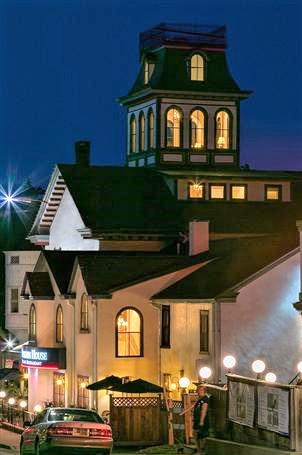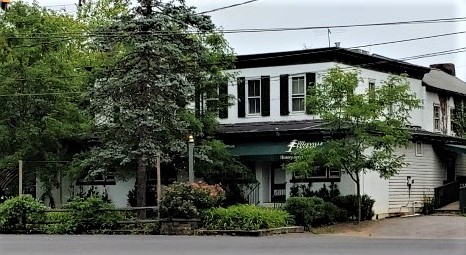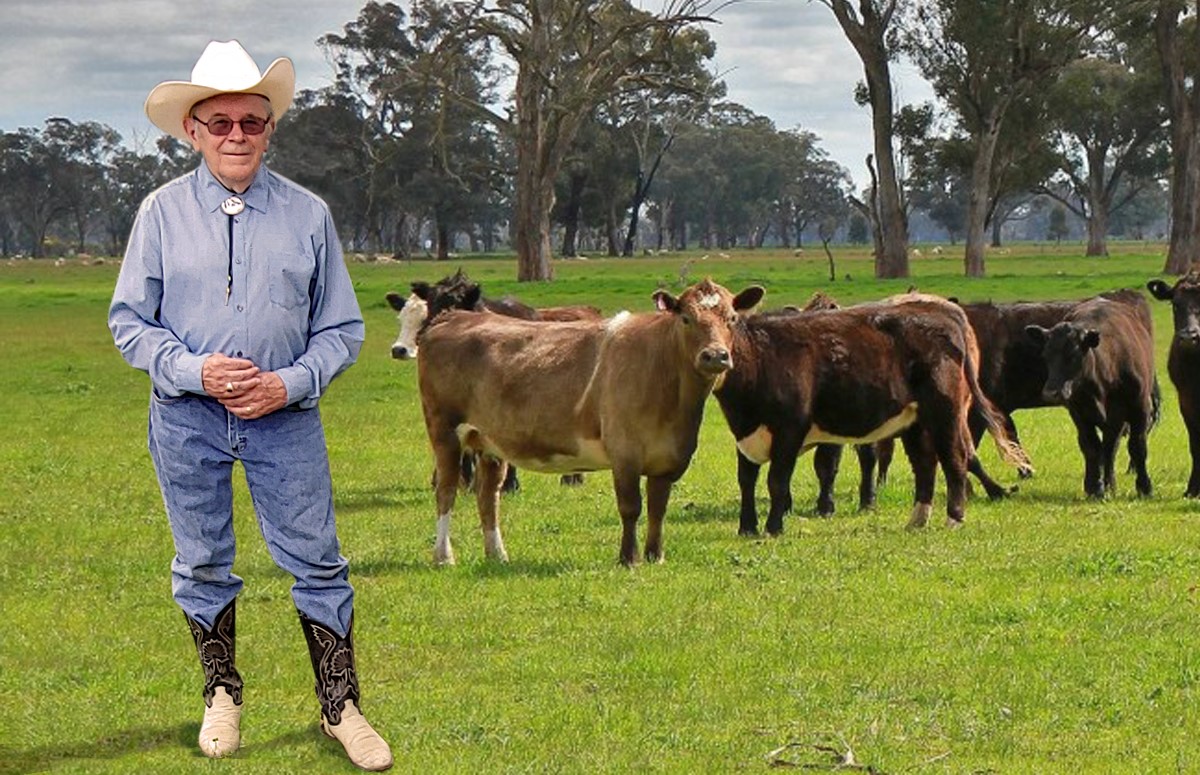Of Western couture, cattle drives and drover inns in Bucks County.
Some years back I led a two-day symposium on submarine warfare at the National Museum of the Pacific War in Fredericksburg, Texas. The schedule included a gala Tex-Mex reception and dance. So how to dress? I really can’t fake it as a cowboy though friend Ray Shaffer who owns a horse ranch in Bedminister is one. Not sure if he ever dressed for a Texas Two-Step however. I should have consulted him.
On a guess, wife Mary Anne and daughter Genevieve took me to the Golden Nugget flea market near Lambertville to buy what I needed.
They quickly discovered a braided-leather bolo tie with sterling silver slide emblazoned with a horse head in turquoise. Nice! Also a cowboy hat big enough to require its own luggage. Plus a Texas-sized brass belt buckle featuring a Pony Express rider in high gallop. Genevieve purchased online a pair of snake-skin cowboy boots to complete my outfit. Hallelujah! Bolo tie, belt buckle, cowboy hat, snake skin boots, my grandfather’s ruby ring he won in a craps game in San Francisco, blue work shirt and well-worn jeans. Git-R-Done,eh? When I couldn’t squeeze my feet into the boots, Genevieve had me slip into a pair of women’s nylon stockings. Hallelujah!
So off I flew to Fredericksburg in the state’s Hill Country. I’m on the short side like my grandfather, Carl the First. He was an authentic cowboy from Texas and a teen phenom as an unbeatable circus race horse jockey. As I stared into the mirror in Fredericksburg, the hat, the buckle and the boots pretty much hid me from view. I strolled into the reception feeling as fine as cream gravy over chicken fried steak. I quickly drew astonished stares. Everyone was dressed in suit jackets with drop arrow detailing, silk cowboy shirts with pearl snap buttons, bolo ties, high-end Stetson cowboy hats, new boots, Western dress slacks, colorful barn dance skirts for the women and more dazzling gold, silver and turquoise jewelry than I’ve ever seen in one place. Someone sidled alongside me. “Nice boots!”
All of this came to mind when former librarian Stephen Rees suggested I write about Bucks County’s version of Texas cowboys known as “drovers”. Sir Walter Scott popularized the term in his 1827 novel, “The Two Drovers” about a cattle drive from markets in London to highland farms in Scotland.

Unlike Fredericksburg, drover couture was the least of worries in 19th century Bucks County. What mattered was getting livestock safely to market. Drovers were common sights in places like Quakertown, Sellersville, Doylestown, Wycombe, Newtown, Langhorne and Willow Grove. Rural hotels and taverns hung painted signs out front conveying information about the local town, whether the inn was a stagecoach stop and whether drovers were welcome. The inns provided feedlots for horses, cattle, sheep, hogs, even poultry. Often the taverns were lively places that hosted livestock auctions when drovers hit town. Stage coaches would arrive with the latest news. Some inns like the Langhorne Hotel added a second-story balcony so drivers of express coaches could throw mail to the upper floor without stopping.
The Washington House in Sellersville was a very popular drover inn as mentioned by librarian Rees. Others included The Farmers’ and Drovers’ Inn in Langhorne, the Cross Keys Inn in Doylestown and the Mountain House in Haycock. In nearby Applebachsville, boarders at White Hall watched as drovers passed on Old Bethlehem Pike with herds of 200 steers or as many as 1,000 sheep.
A popular drover stop was Buckingham’s Pineville Tavern on Durham Road (Route 413). The “great road” as it was called was the only continuous route spanning the county from upper to lower end. The tavern built in 1742 hosted many livestock auctions making Pineville an important business center. It drew professional drovers serving as middlemen between farms and market in a lucrative trade. They’d deliver herds to buyers, then return with cash for sellers. Being reliable and trustworthy, the drovers often carried large quantities of cash for deposit in banks in market towns. They also delivered important letters. On long treks, they sometimes sold their stock to others who completed the journey. Drovers normally overnighted at local inns without incident. But occasionally livestock escaped requiring a noisy roundup such as the case in Wycombe when hogs broke free at night and fled through the village in the 1880s. In Lower Bucks, cattle drives out of Philadelphia destined for New York were common occurrences on Bristol Pike through Andalusia, Bristol and Morrisville.

Drovers – “cowboys” in the Old West – typically loved rum and partying after a long journey. Locally, the Texas Two Step hadn’t been invented. Drovers were apt to attend the Bucks County version of a barn dance called the “frolic”. You were in good stead if you could dance the “glockenplattler”. Dress optional.
Sources include “Colonial Inns and Taverns of Bucks County” by Marie Murphy Duess published in 2007; “Drovers and Livestock Drives” by David S. Rotenstein published in 2012 by e-WV: The West Virginia Encyclopedia, and “Place Names in Bucks County” by George MacReynolds published in 1942.

